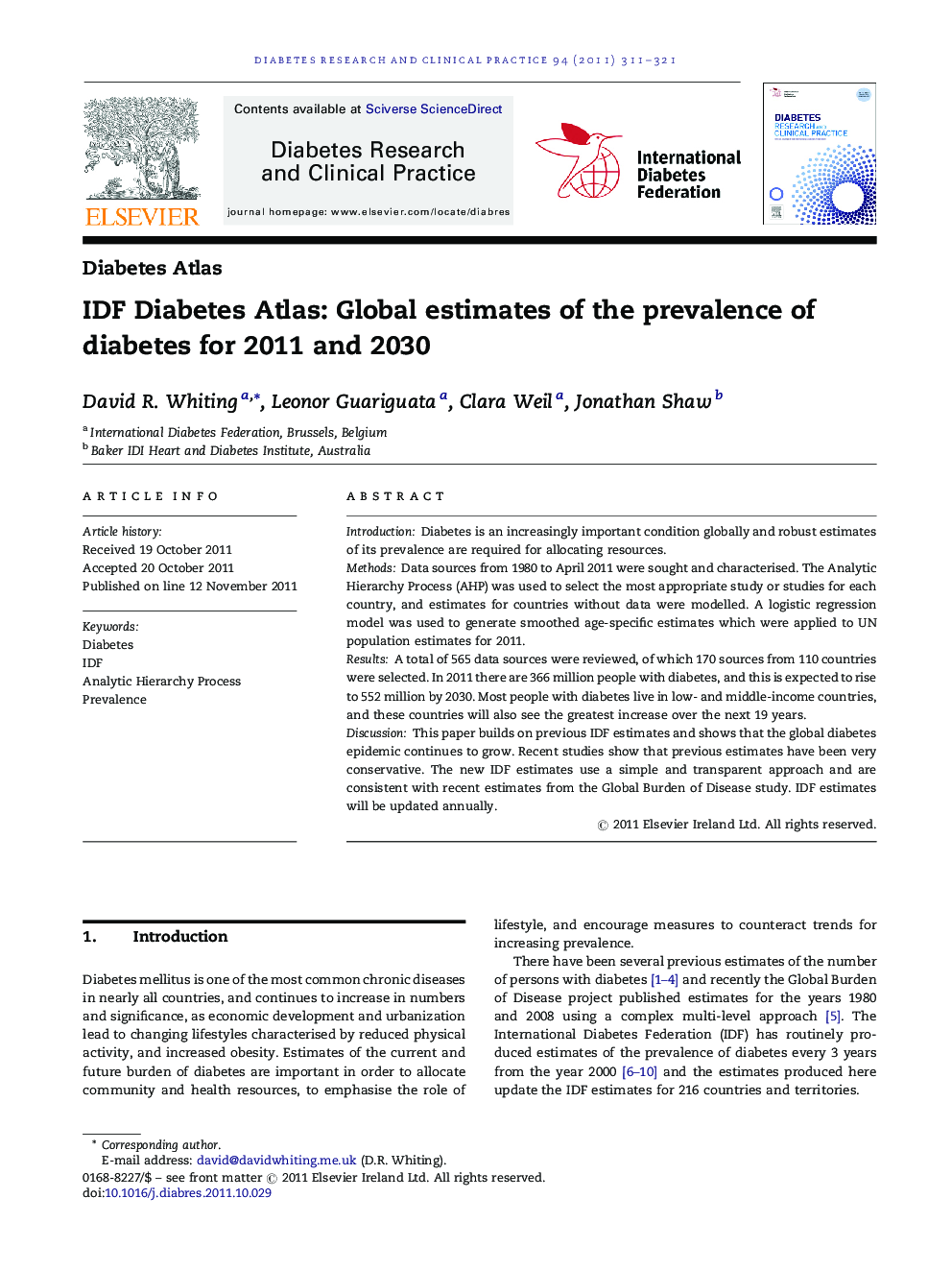| Article ID | Journal | Published Year | Pages | File Type |
|---|---|---|---|---|
| 5900106 | Diabetes Research and Clinical Practice | 2011 | 11 Pages |
IntroductionDiabetes is an increasingly important condition globally and robust estimates of its prevalence are required for allocating resources.MethodsData sources from 1980 to April 2011 were sought and characterised. The Analytic Hierarchy Process (AHP) was used to select the most appropriate study or studies for each country, and estimates for countries without data were modelled. A logistic regression model was used to generate smoothed age-specific estimates which were applied to UN population estimates for 2011.ResultsA total of 565 data sources were reviewed, of which 170 sources from 110 countries were selected. In 2011 there are 366 million people with diabetes, and this is expected to rise to 552 million by 2030. Most people with diabetes live in low- and middle-income countries, and these countries will also see the greatest increase over the next 19 years.DiscussionThis paper builds on previous IDF estimates and shows that the global diabetes epidemic continues to grow. Recent studies show that previous estimates have been very conservative. The new IDF estimates use a simple and transparent approach and are consistent with recent estimates from the Global Burden of Disease study. IDF estimates will be updated annually.
